ENERGY COOPERATIVE



IN THIS
PRESIDENT'S MESSAGE
COOPERATIVE AMBASSADORS
CHANGE IN LEADERSHIP
PG. 3
PG. 6
PG. 11





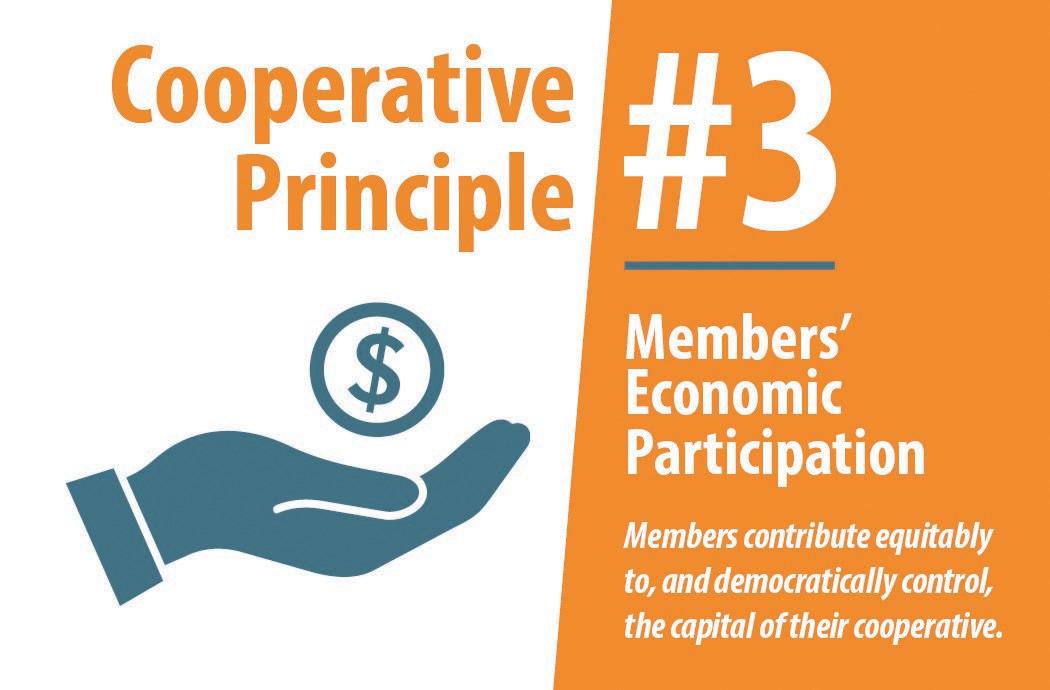


As we turn the page and look forward to 2023, I'd like to reflect on four major events we experienced in 2022; Intel; the June storm; paying capital credits; record-levels of inflation. Once the year end financials are complete, I will share them with you as well as our progress towards completing 2022 strategic goals.
We paid capital credits to our electric members for the first time since 1999. This has been a long-term goal for many of your directors since they were elected to the board. The capital credit retirement totaled $671,840. For those of us who have been around to see the growth and improved financial strength of Energy Cooperative, this is a big milestone. It helps us embrace the seven cooperative principles we live by each day while fulfilling principle #3: Members’ Economic Participation.
In 2022, Intel announced they are coming to our service territory. As a result of this news, we anticipate near record level growth in residential members for both our electric and gas cooperatives. While this is exciting, it has created a level of uncertainty for us and many of our members. We are beginning the process of moving our electric and gas infrastructure to accommodate the new growth surrounding Intel and planning for the additional load that could come to our system. I’ve always said commercial and industrial growth helps offset the cost for our residential members, and we will continue to see that in the next few years.

A major storm devastated parts of our northern service territory in June. The severe thunderstorms produced winds estimated at 60 to 70 mph.
According to the U.S. Bureau of Labor, we’ve experienced the largest annual increase in inflation since 1981. While the price of everyday household items increased (coffee up 15.8%, butter up 21.3%, and eggs up 33.1%), the cooperative also faced unprecedented levels of increased cost for supplies, vehicles, material and labor. While I believe we will still have financial results that met our goals and covenants with our bank, we did not complete many projects planned for 2022 to stay within our financial goals.
As 2023 brings new growth to our service territory, we continue to face ever-rising costs. The board approved a small rate adjustment for both gas and electric members during their December meeting. It is our goal to keep your rates as low as possible, while still providing you the service and reliability you expect from us. We will work to maintain costs the best we can and hope to see costs flatten out during 2023. Our goal is to limit any potential rate adjustments in 2024. We understand that adjusting your bill adds to your increasing costs, however, the approved adjustments represent less than a two percent increase. You can see the new rates on the back of your Energy Cooperative bill until they go into effect on April 1, 2023.
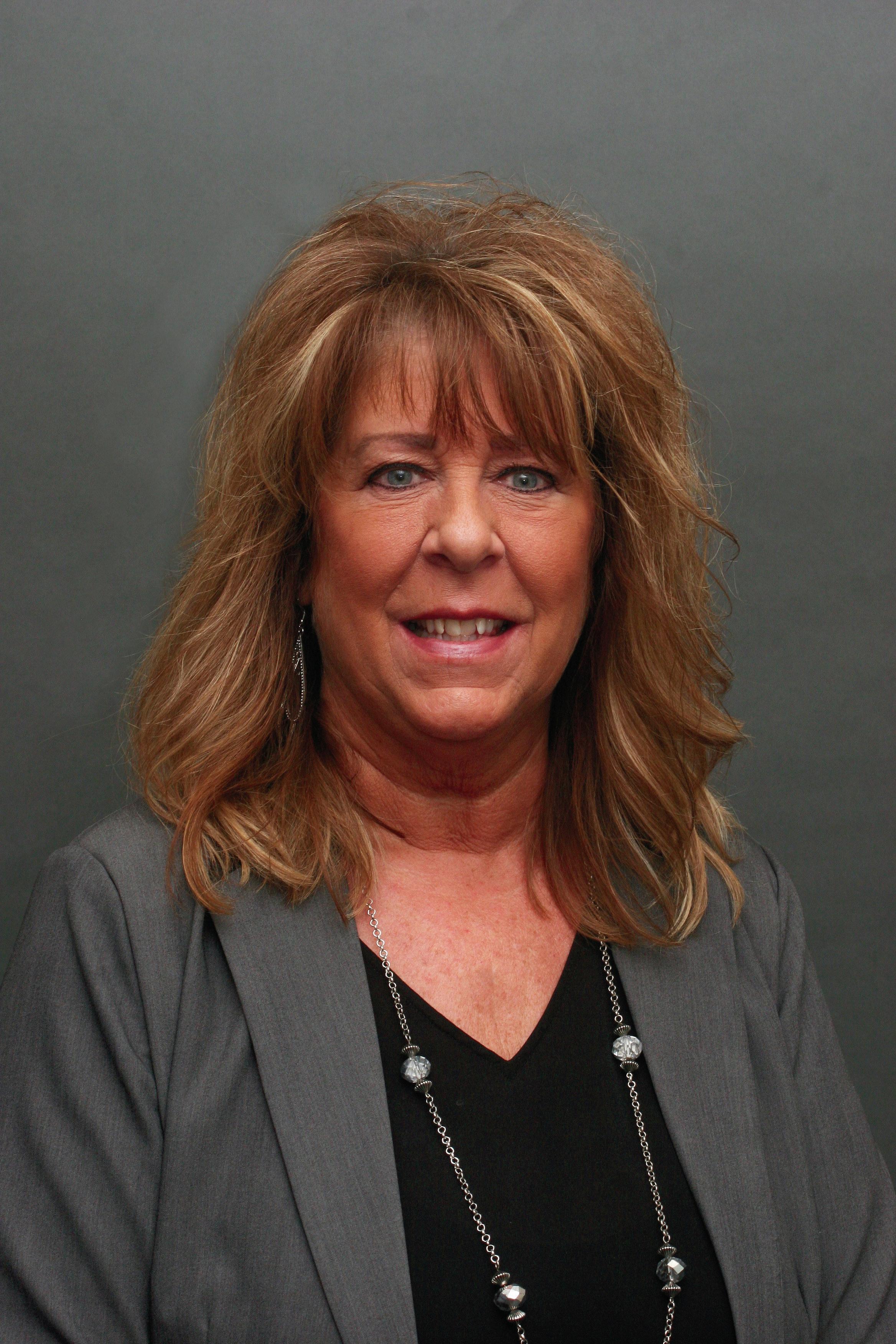
National Burn Awareness
Week is a window of opportunity to share a common burn awareness and prevention message in our communities.
Cooking is the number one cause of home fires and account for 47% of all home fires. Preventing a burn is always better than treating it afterward. Here are a few tips from the American Burn Association to help keep you safe in the kitchen.

• The best time to cook is when you are wide awake and not drowsy from medications or alcohol. Always wipe clean the stove, oven and exhaust fan to prevent grease buildup.
• Keep a pan lid and dry oven mitts near you every time you cook.
• Turn pot handles toward the back of the stove.
• When heating food in the microwave, use microwave safe cookware that allows steam to escape. Allow food to rest before removing from the microwave.
• Use a pan lid or splash guard to prevent grease splatter when frying
• Stay in the kitchen while you are frying, grilling or broiling food. If you leave, turn off the stove.
• Check simmering, baking, roasting and boiling food regularly.
• Remain in the home while food is cooking and use a timer to remind you to check on the food.
• Double check to ensure all burners and appliances are turned off when you finish cooking.
1. Cover the pan with its lids. A cookie sheet works, too. Never move the pot or carry it outside.
2. Turn off the heat. With the lid on and heat off, the fire should put itself out. Never use water to put out a kitchen fire. Water can cause oil to splatter and spread the fire.
3. If the fire is inside the oven, keep the door shut and turn it off. Keep closed until the oven is cool.
4. If the fire gets out of control- get out, stay out and call 9-1-1.
• Stop the burning process with running cool (not cold) water for at least 5 minutes.
• Administer an over-the-counter pain reliever such as ibuprofen or acetaminophen for pain control. Follow the directions on the label. Consult a physician or health care provider if pain is not relieved.
• Cover the burn with a sterile gauze bandage or clean cloth. Wrap the burned area loosely to avoid putting too much pressure on the burn tissue.
• For a small area burn (less than 1% or the size of the person’s hand), apply soothing lotions that contain aloe vera to a burned area to help relieve the pain and discomfort.
• Seek medical attention if there is a persistent fever not relieved by medication, redness that may extend beyond the border of the burn or pain is not controlled by ibuprofen or acetaminophen.
• Drink plenty of fluids (electrolyte-containing solutions such as Gatorade) if the person is dehydrated.
• Do not apply ice—this may cause further damage to the skin. Do not over cool! If you start to shiver, stop the cooling process. Minor burns will usually heal without further treatment.
• Do not use any butter, ointments or other home remedies on the burn. Such substances may trap the heat in the tissue and make the burn worse.
• Do not break any blisters—leave intact. Blisters may rupture over time—this is normal.
• Do not delay seeking medical attention if the burn is larger than the size of your hand.
Be sure to educate yourself and your family on burn prevention and response. Visit the American Burn Association’s website, ameriburn.org, for additional resources and information.
Connie Hogue
Budget Billing is a free service that allows you to spread your utility payments throughout the entire year and keep your payment amount as consistent as possible. Budget billing does not save you money. Instead, it spreads out your total utility costs evenly throughout the entire year. The main benefit of budget billing is to avoid high bills during months when you use more energy to heat and cool your home.
Although the amount due each month remains the same, we show your actual charges on your bill. Any difference between the amount paid and the amount charged becomes your deferred balance. A settle-up process occurs and the deferred balance is in the calculation for the next year’s budget amount. We review budget accounts twice a year to make sure it is the right amount to cover your total energy use for 12 months.
Members who participate in budget billing build a credit at some point throughout the year. The credit does not mean you should skip your monthly budget payment. Instead, your credit builds up so you will not need to pay more than the budget when your energy use increases during the summer or winter months. When you pay more than your budget, it goes towards the account balance and does not take the amount from your next budget.
• Your account must be in good standing and have a zero balance.
• You must have at least one year of energy use in the home.
• We keep you on it until you tell us otherwise. However, if you miss budget payments, we remove you from the program. You cannot return to budget billing until your account balance is zero.

You can sign up for budget billing by simply calling our Member Service Department at 1-800-255-6815
If you’re having trouble managing your home energy costs, Ohio’s Energy Assistance Programs can help.
The Winter Crisis Program provides a benefit once per heating season to eligible Ohioans facing disconnection, have been disconnected from their utility service or have less than 25% of their supply of bulk fuel.
• You use more energy than you did when we estimated your last budget. This can happen when extreme weather events occur.
• Your budget amount will go up if the amount we charge for electric, gas or propane increases. Recently, this has been the case for our gas and propane members on the budget.
Ohio's Home Energy Assistance Program (HEAP) provides eligible Ohioans assistance with their heating bills. The one-time benefit is applied directly to the customer’s main heating bill. Ohioans with a household income at or below 175% of the federal poverty guidelines are eligible for the program. Visit development.ohio.gov/individual/ energy-assistance to learn more and apply.
Congratulations to the 2022 Cooperative Ambassadors for completing the program!
In 2022, Energy Cooperative kicked off a new program - Cooperative Ambassadors. This program was created for cooperative members who were interested in learning more about their cooperative, creating new connections with our staff and helping to enhance community awareness of Energy Cooperative.
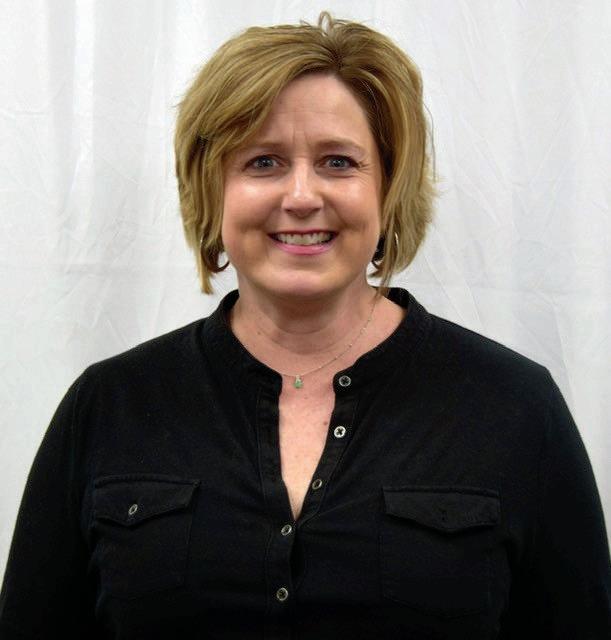
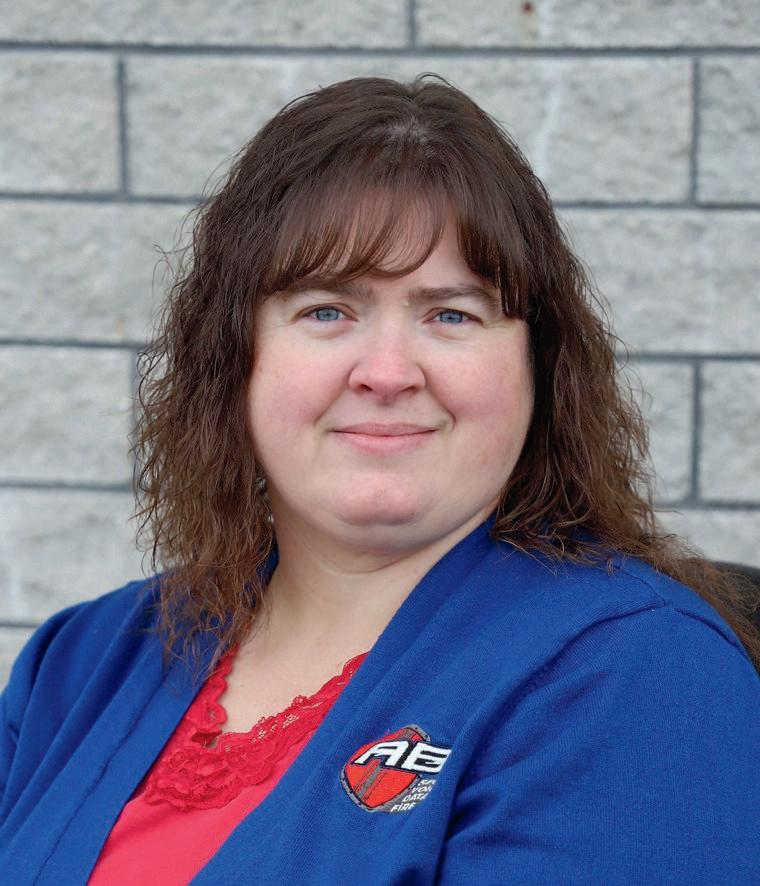
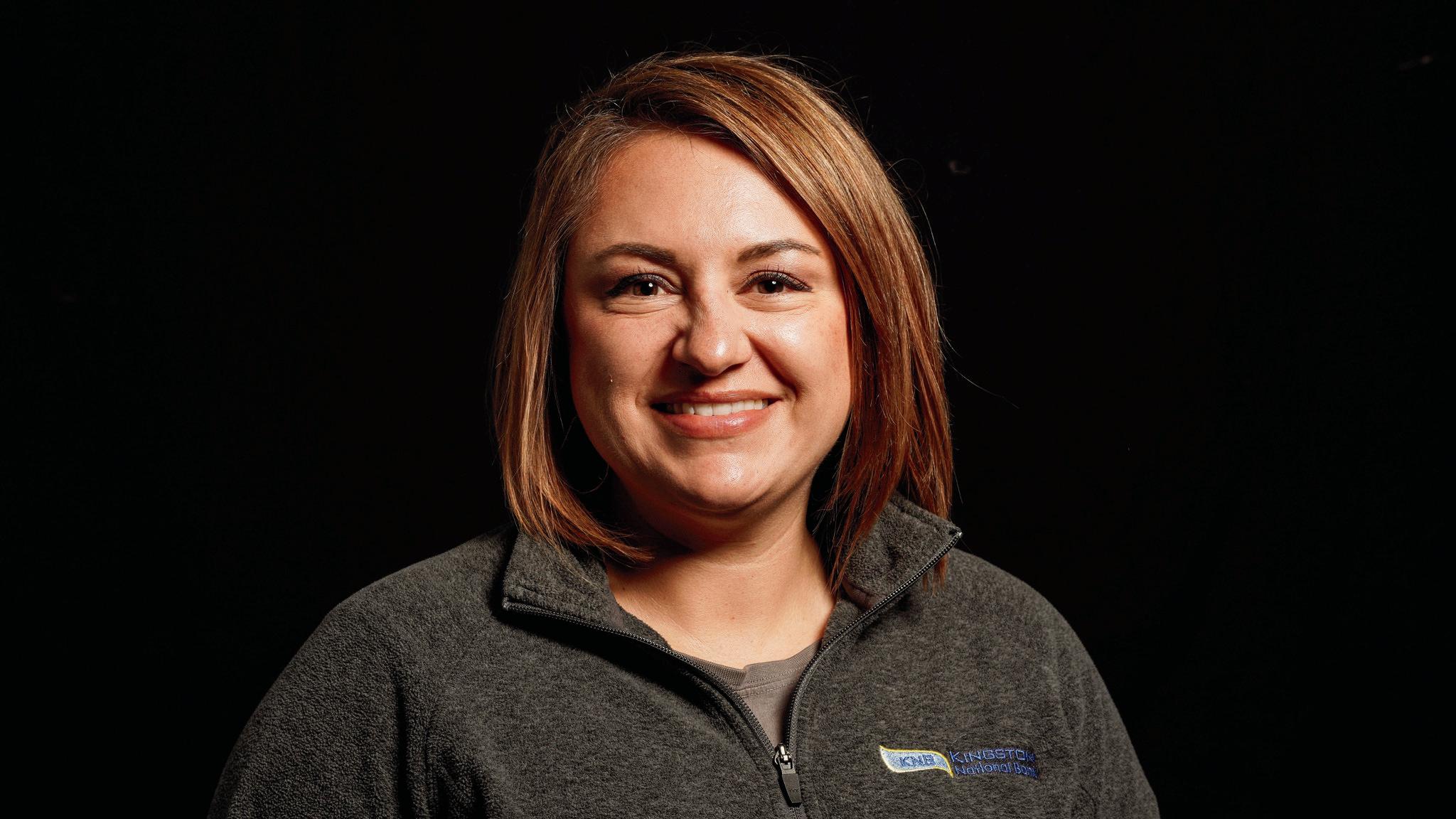


Through four sessions, the ambassadors learned about cooperative basics, such as the utility industry, the state of the financials, our approach to member service and how we are preparing for the extreme growth heading into our service territory (the Intel effect). The program concluded with the ambassadors joining the Board of Directors for lunch to discuss the program, ask questions and tour of the electric cooperative facility in Utica.
The ambassadors spent time in the electric control center with Vice President and Chief Operating Officer - Electric Operations, Josh Filler, taking a closer look at some of the equipment used every day. He also showed and explained the difference between underground and overhead electric cables and how they connect to electric meters.
Vice President and Chief Operating Officer – Gas Operations, Dan McVey, showed the group a pipeline marker and discussed why they are important. He also brought a damaged pipe cut by a third party to educate how important it is to call OHIO811 before digging.


Upon completion of the ambassador program, Spencer Barker posted, "Today I completed the Energy Cooperative Ambassador Program! For the past 6 months, I was able to learn all aspects, at a high level, of the Energy Cooperative organization. I cannot express the amount of knowledge I have gained from this program."

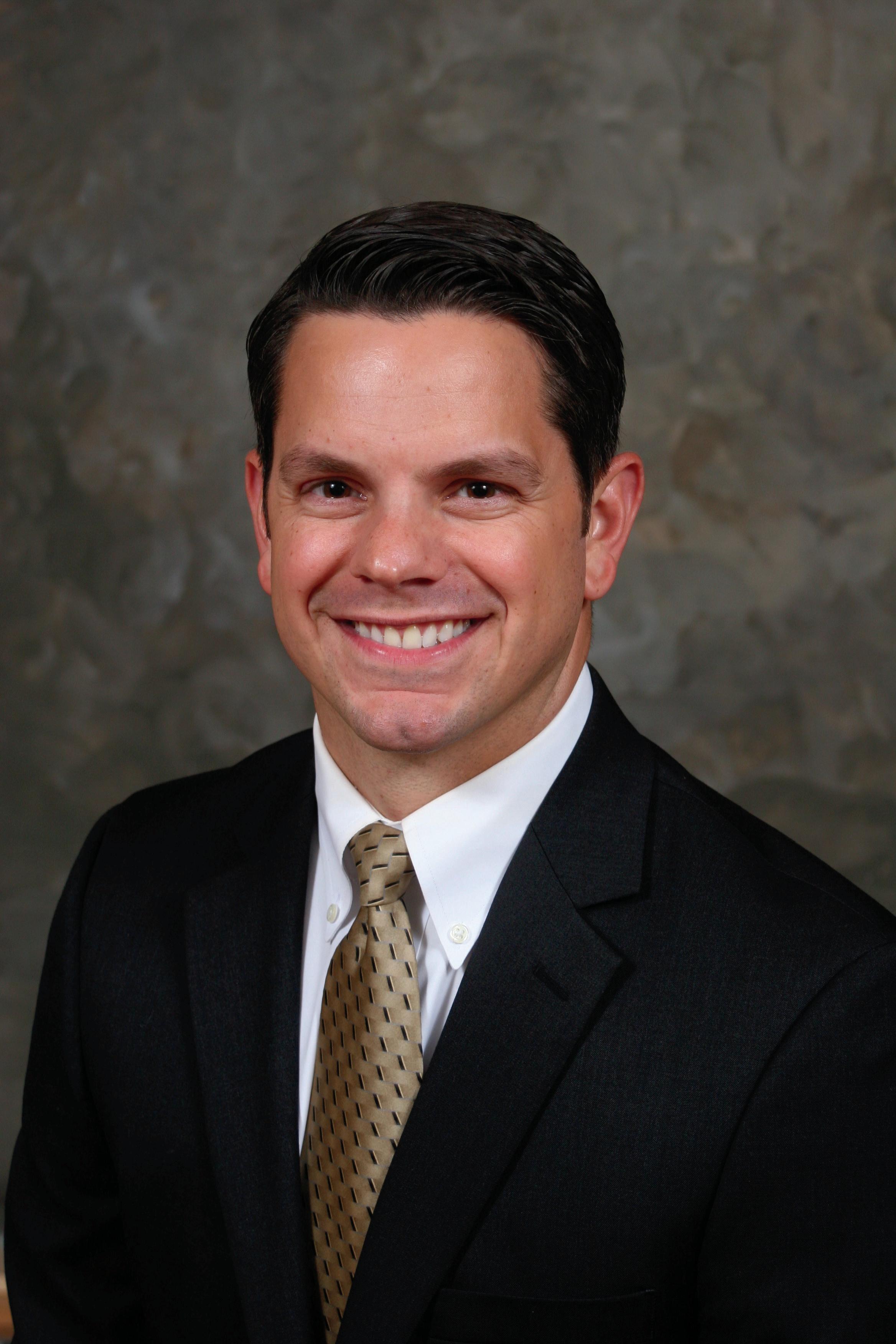

“I would like to thank our first round of cooperative ambassadors. Your level of engagement and professionalism made this a great experience for us. We hope it was impactful for you and look forward to continuing this program in the future.”
-Todd WareSpencer Barker Laurie O'Hara Lindsey Hoskinson Tulsi Kafle Matt McKenzie Aleesa Womer





With winter upon us, we must plan for potential weather situations. As a small business owner, it’s important that I am prepared to serve my customers throughout these sorts of challenges. Similar to how I strive to treat my customers, the cooperative always keeps its members as a top priority. Time and time again, I have witnessed the countless ways our cooperative proves its member-focused mindset.
For many reasons, I’m proud to be an Energy Cooperative Director, but their customer service is at the top of my list. Remaining in the member-focused mindset theme, please consider the safety tips listed below. Navigating through the winter can be challenging, but choosing to be prepared and deliberate in your actions before you get in your car and while on the road this winter can make a huge difference in our situation.
• Make sure your gas tank or EV battery is at least half full. If you get stuck in traffic or heavy snow, you may need more fuel than normal to get home or to stay warm.
• Equip your vehicle with an emergency kit. It should include a blanket, flashlight, ice scraper, small snow shovel, cell phone battery charger, water and snacks. Also, include an abrasive substance, such as salt or sand, to place under the tires if you're stuck.
• Maintain your vehicle. Tires and batteries are especially susceptible to the ills of winter weather (tire tread is worn if it's less than 1/16-inch deep). Windshield wipers should be in good condition, along with plenty of wiper fluid for clearing the ice and slush.

• Remove snow and ice from your vehicle. For greater visibility, clear off your windows, headlights and brake lights, roof and tailpipe. Keep in mind that it's illegal in some areas not to clear the snow from the roof of your vehicle as it could fall off and create a hazard for other drivers. A snow-clogged tailpipe could allow deadly carbon monoxide gas to build up inside your vehicle.
• Take it slow. Not only will you need extra time to stop on snowy, icy roads, but it's important to accelerate slowly as well. This is the best way to gain traction and avoid skids. As a general rule of thumb, following distances should increase from three to six car lengths on dry pavement to at least 10 car lengths in wintry conditions.
• Brake wisely. Chances are, your vehicle has antilock brakes (ABS). With ABS, it's not necessary to pump your brakes. Instead, when the car feels like it's vibrating, that's a sign that the anti-lock braking system is in control and that it's pumping for you. Don't have anti-lock brakes? Then start pumping.
• Avoid spinning your wheels. This only melts the ice and snow beneath your tires, making the surface even more slippery. Instead, accelerate just enough to make the car move.
• Travel a safe distance behind snow plows. Snow plows make wide turns, move slowly and may kick de-icing materials or slush into your field of vision. Don't get too close or drive beside them.
• Drive with your lights on. This increases visibility in dreary weather and ensures that other drivers can also see you.

Securing and protecting our electric grid is a top priority. Electric cooperatives incorporate multiple layers of security across our systems to monitor and protect critical infrastructure from natural and manmade threats. We work to stay ahead of security challenges by collaborating with industry partners, peer organizations, government agencies and local officials.
We apply innovative technologies to improve grid resilience and reliability to members. A resilient electric grid begins with a system designed to withstand high winds, powerful storms, cybersecurity threats and other disruptions that could result in outages.
Resiliency is a 24/7, 365-days-a-year task. Whether it is the power lines, substations or generation facilities on our grid, it takes proactive maintenance and investment to keep them running smoothly.
Throughout the year, we regularly conduct substation, pole and line inspections. Our goal is to find a problem before it becomes one. For example, if we find a pole that has damage from wood rot or woodpecker holes, we replace that pole. Doing so ensures that the pole is as strong – or as resilient – as it can be.
We have confidence in the resiliency of our system and work every day to prevent power outages or recover from them as quickly as possible. Please contact us if you see something of concern within our system (broken pole, trees growing into power lines or someone tampering with or damaging utility equipment). With your help, we can ensure our electric system is both protected and resilient.
Electricity is produced at a generation facility either by renewable or non-renewable energy sources.
Distributed generation systems like rooftop solar panels produce electricity when their energy source is available, such as when the sun shines. When the energy source is unavailable, the home or business receives electricity from the grid. If the system produces more electricity than needed, the excess power is sent back to the grid.
After the electricity is generated, it travels through high-voltage transmission power lines to electric substations, where the voltage is lowered.
Once the voltage is lowered, the electricity travels over distribution power lines, which ultimately deliver the electricity to our homes and businesses.
Josh Filler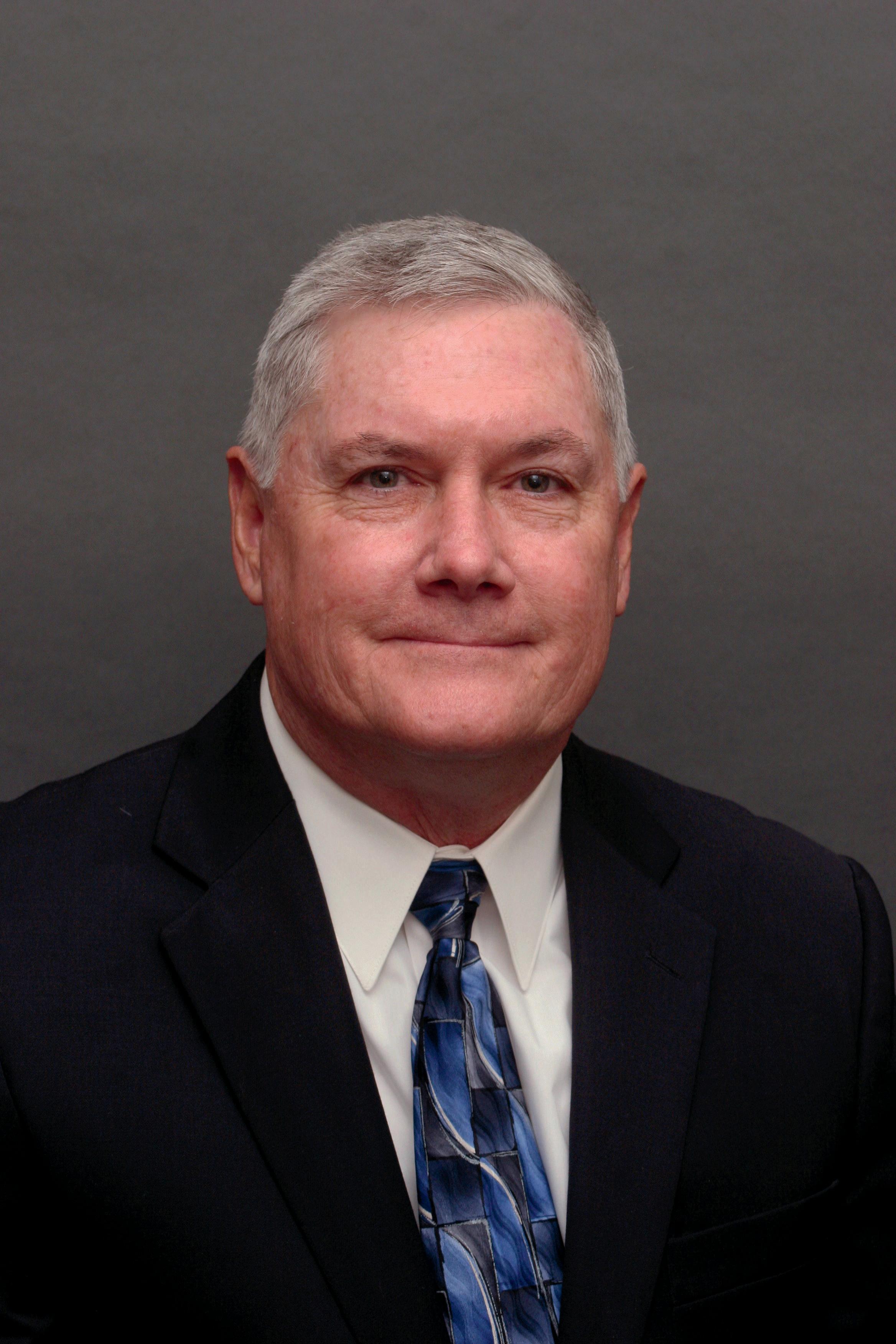
Cyber and physical security are integral to the natural gas industry. Natural gas pipelines, which move over one-third of the energy consumed daily in the United States, are critical infrastructure. All along the natural gas supply chain, from production to delivery, the industry employs many tools to help ensure protection of its facilities from both physical and cybersecurity threats.
On the physical security side, fences, routine patrols and continuous monitoring help protect above-ground facilities such as compressors, well sites, processing plants and meter stations. The natural gas industry routinely holds briefings and workshops to discuss security concerns, and it has developed guidelines and leading practices to protect facilities. Natural gas trade associations and their members regularly run simulated exercises in response/recovery efforts to help prepare in the event of natural or manmade disasters and work closely with government agencies to share threat information and practices.
On the cybersecurity front, the federal government partners with the natural gas industry on cybersecurity and initiatives to promote situational awareness, mitigating measures and response/recovery. One of the most important aspects of cybersecurity in pipeline operations is ensuring the integrity and operability of the Supervisory Control and Data Acquisition (SCADA) system of each pipeline against cyber compromise. From a cybersecurity perspective, natural gas functions are divided across an enterprise network and operations network (which includes SCADA and pipeline monitoring). These two networks are isolated from each other, and a portfolio of tools and mechanisms are used to improve the prevention, detection, and mitigation of cyber penetration.
Cybersecurity is also a priority in other areas of supply chain, such as natural gas production. Many companies orient their cybersecurity programs around the National Institute of Standards and Technology (NIST) to protect critical infrastructure. Using this standard equips upstream operators with the process and tools they need to prevent cyberattacks.
Cyber risk management at any company is tailored to that company’s assets and potential risks and must also be flexible to respond to ever-changing external threats and internal deployment of digital assets.

Although one size does not fit all, there are some common features of cyber risk management programs for systems used by natural gas companies, including: training and security awareness, segregating process control networks, restricting access to computer hardware and control programs, restricting and monitoring vendor access to equipment and systems, and on-site inspections and cyber-related drills.
Further, natural gas delivery systems are mechanical by nature and can still be run manually if necessary. Natural gas moves by using pressure to control the amount entering and leaving the system. Layered onto this control system are devices that detect changes in pressure, which serve as a safeguard to prevent gas pressure from threatening pipeline integrity.
The natural gas industry has robust cyber and physical security protocols to minimize disruptions from manmade or computer threats, and has a resilient, interconnected system that allows it to come back online quickly in the rare case of a disruption.Dan McVey




Energy Cooperative announces the retirement of Gary Baker, Vice President of Marketing and Member Services, after more than 10 years of dedicated service to the Cooperative.

“I want to thank Gary for developing strong community partnerships and remaining focused on cooperative principle number 7, concern for community. Gary worked to expand our member events, including Kids Day and Earth and Energy Day. His dedication to our members and the communities we serve will be missed” said Todd Ware, Energy Cooperative’s President and CEO.
Prior to joining Energy Cooperative Gary owned and operated Baker Media Solutions – a video/multi-media production company – providing professional video production services to central Ohio businesses. In September of 2012, he joined the Energy Cooperative as Director of Marketing & Public Relations and was later promoted to Vice President of Marketing and Member Services. He is a graduate of NRECA’s Management Internship Program (MIP)
Gary continues to be active on the Newark Midland Theatre Association Board of Directors, serving as past president. He is a board member of the Licking County Board of Developmental Disabilities. Gary has been an active member of the Newark Rotary Club since 1987 and is currently serving as District Governor Elect (2024-25) for Rotary District 6690.
Heather Juzenas has been promoted to Vice President of Marketing and Member Services of Energy Cooperative effective immediately. In her new role, Heather will provide leadership and oversee the cooperative’s planning, development and implementation of our public relations and member service strategies.
Heather joined Energy Cooperative in April 2018, as Communications Manager. In August 2021, she was promoted to Manager of Member Services overseeing both communications and member services. Heather has a BS in education from Otterbein University and an MBA from Ashland University. During her time at the cooperative, she became a Certified Cooperative Communicator with National Rural Electric Cooperative Association (NRECA). Heather is also a member of Energy Cooperative and resides in Pataskala with her husband, Chris and their children, Eli and Claire.

Throughout Heather’s tenure with the cooperative, she has been actively involved and supported numerous organizations including Newark-Heath Rotary, Women’s International Network of Utility Professionals, American Gas Association, Ohio’s Electric Cooperatives Communication Association and Big Brothers Big Sisters of Licking and Perry Counties.
Juzenas has been an integral part of the cooperative’s succession planning and has worked hard preparing for this transition. Todd Ware, President and CEO of Energy Cooperative stated, “I am very excited to have Heather as part of my executive team. She has continued to grow and gain a thorough understanding of the cooperative and has made many enhancements to our overall communications and member service area. I look forward to the continued contributions she will bring to the Cooperative and to my executive team.”
“On behalf of the Board of Directors, myself and staff, we are excited for Gary and his family as they embark on this exciting new chapter.” -Todd WareGary Baker A transition in the Marketing & Member Services Department Heather Juzenas
The Cardinal Power Plant is difficult to miss. Perched along the Ohio River in Brilliant, the coal-burning generation station with its massive stacks is an iconic vision for anyone who traverses the Ohio River Scenic Byway between Martins Ferry and Steubenville.

The plant provides electricity to more than a million Ohioans who live and work in electric cooperativeserved areas through Buckeye Power, the cooperative created by Ohio’s electric co-ops to provide the electricity they deliver to members. With close to 300 employees, it’s a major economic force in the region. It’s also an economic force for co-ops — beyond production of electricity that powers those co-op homes and businesses, it also produces marketable products that help keep its energy as affordable as possible.
In simple terms, the act of combustion produces heat, water, and carbon dioxide, and depending on the fuel being burned — in this case, coal — there are other byproducts.
Ohio’s electric cooperatives have invested more than $1 billion in environmental systems to keep most of those other byproducts contained. One such system, the scrubbers, removes sulfur dioxide and converts it to synthetic gypsum. Synthetic gypsum has many uses, and it’s a key component in wallboard used in homes and businesses.
The United States construction industry is forecast to grow by between 5% and 8% over the next several years, according to industry studies. Coupled with the fact that a few other power plants have been shuttered, that creates a greater demand — and less available supply of — synthetic gypsum. “Buyers that may have at one time bought gypsum from a power plant that was nearby now have to go farther to find good-quality gypsum,” says Randy Keefer, director of fuel procurement and byproduct sales at Buckeye Power.
As demand for gypsum has grown, Cardinal Plant employees have set about improving the consistency and quality of the gypsum through the scrubbing process.
“We go through a lot of testing to make sure that the gypsum we produce is within specification for buyers,” says Cardinal Plant manager Bethany Schunn. Currently, the plant is selling nearly all of its synthetic gypsum production due to high demand.
That demand has allowed Cardinal to sell gypsum that had previously been placed in the plant’s EPA-permitted, on-site landfill, which covers many acres. “Recently, the demand is so high that companies want us to dig older gypsum out of the landfill and sell it to them,” Schunn says. “We sell 35,000 to 40,000 tons a month from the landfill alone.”
“Thanks to the efforts and foresight of Cardinal’s landfill operators to keep gypsum segregated from other coalcombustion residuals, we’ve found that the quality of the landfill gypsum remains very good for wallboard production,” says Keefer. In fact, one of Cardinal’s landfill cells that once contained 400,000 tons of gypsum has been completely removed and sold. Workers are now digging into a second cell, which contains up to 1.4 million tons of gypsum — and the plant has a contract to reclaim and sell all of that as well.
Keefer says that’s a good thing, not only for the company but for the environment, since it delays the need to construct additional landfills. But it also helps control costs for members who get their electricity from Buckeye Power.
In 2014, Cardinal Plant sold about 215,000 tons of synthetic gypsum, while more than 560,000 tons went into the landfill. These days, it’s rare that any gypsum produced through the scrubbing process becomes landfill. Of more than 2 million tons of synthetic gypsum produced from 2019 to 2021, just a shade less than 99% was sold for wallboard, cement, or agricultural use. Gypsum sales are projected to account for nearly $13 million in revenue in 2022 and even more in 2023 and 2024.
But gypsum isn’t the only marketable coal byproduct, according to Buckeye Power’s Randy Keefer. Fly ash, the wispy substance left from burning coal, is an ingredient in concrete, while bottom ash, a much heavier, denser product, is used to treat snowy, icy roadways.

Sales of fly ash are projected to double to about $1 million annually — perhaps more — in the next few years, while sales of bottom ash have been consistently about $100,000 per year.
While that may not make a huge difference on individual electric bills — maybe a couple of dollars to the average co-op member each month — it does contribute to the bottom line, and every bit helps.
“Buckeye Power is not-for-profit. We exist solely for the purpose of providing low-cost energy to our members. Anything that we can do to reduce our cost to produce electricity has a direct impact. It’s our job and goal to provide reliable, competitively priced energy for our members.”
-Randy Keefer
Because of the generosity of our members rounding up their bills to the next whole dollar amount each month, the Energy Cooperative's Operation Round Up Foundation has donated more than $4.1 million to community organizations.


The Operation Round Up Foundation awarded $84,190 to the following community organizations in December:
Bishop Fenwick School toward library management software
Homeless Hands of Zanesville toward new location repairs & upgrades
Loudonville Pickleball for pickleball courts
Hartford Township Fire Department to purchase firehose
Mount Vernon Fire Department for equipment
National Road Elementary for PBIS program supplies
New Life Baby Pantry to purchase shelves & supplies
Center for Disability Services to finish new build
Licking County Library for imagination library
Roseville Historical Society to repair water/moisture damage
Watkins Band for sound system improvements
Crooksville Fire Department toward a brush truck
Forever Dads for windows
Muskingum Center for Seniors for record-keeping software
My Place to Be to purchase chromebooks
Robbins Hunter Museum for plumbing/water line
Do you know an organization that could benefit from an Operation Round Up grant? Scan the QR code with your smart phone or visit myenergycoop.com/roundup

This winter, you can pitch in at home to help save energy!
Read the energy-saving tips below, then find and circle the bolded words in the puzzle.

• Open curtains and blinds during the day to allow sunlight in to warm your home.
• Instead of turning up the thermostat, add more layers of clothing to keep your body warm.
• If you have a fireplace, ask an adult to close the flue when a fire is not burning.
• Unplug chargers when they’re not in use. They consume energy even when they’re not charging phones and other devices.
• Ask an adult to check the air filter for your home’s heating and cooling system. Filters should be replaced regularly to help the system run more efficiently.
• Always turn off lights when you leave a room.
1500 GRANVILLE ROAD
P.O. BOX 4970
NEWARK, OHIO 43058-4970
Energy Cooperative’s business hours are Monday through Friday from 7:30 a.m. to 4:30 p.m.
• Member service: 1-800-255-6815
• Electric outages or emergencies: 1-888-535-5732
• Natural gas or propane emergency: 1-800-255-6815
If you see a downed power line or other electrical hazard, call 911 then call our outage line at 1-888-535-5732. Assume every downed power line is energized and dangerous.
If you smell rotten eggs or suspect a gas leak, leave the area immediately. Call 911 then call us at 1-800-255-6815.
